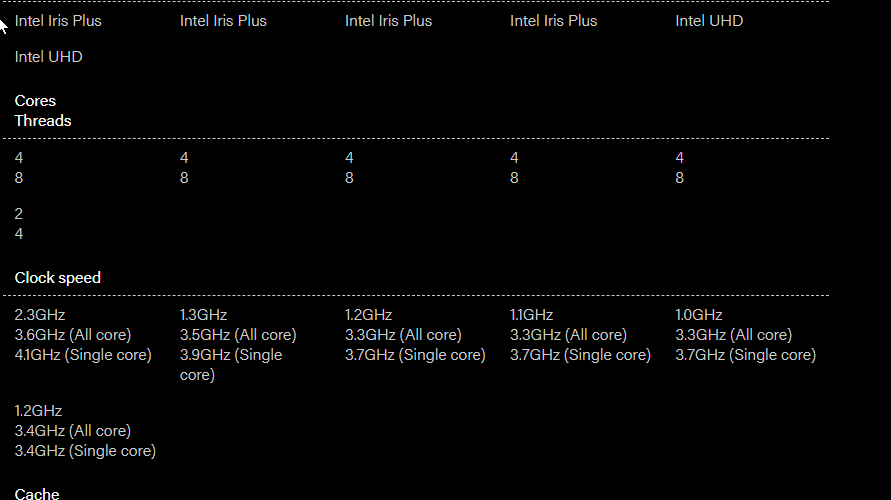Intel launches 10th gen to take on AMD in the desktop and mobile computing space
- Tjiua-Tjipi Haukambe

- Apr 30, 2020
- 4 min read
Updated: May 1, 2020
Intel’s 10th gen has landed for Desktop following the launch of their 10th gen mobile processors aimed at laptops and 2 in 1 format devices that directly competes with AMD 4000 series of mobile processors.

Desktop 10th Gen
Intel is taking the fight to AMD with revised and better optimized older gen CPU technology that feature more cores and more threads than the previous generation. The lack of an actual push to reduce the nanometer(nm) size for the new generation CPU's depicts a company that seems to be finding it difficult to transition to thinner and more densely packed CPU's making it difficult for Intel to yield more efficient and less power-hungry offerings with the current latest generation. Regardless of this fact, the new generation offers higher IPC and core counts with the top of the range i910900K boosting up to 5.3 GHz which is impressive when you consider that AMD silicon is yet to surpass the 5.0 GHz barrier that being said this impressive boost number is achieved mainly when conditions are just right so that Intel’s Thermal Velocity Boost Technology which is an A.I protocol that ramps up the speed of any given core can activate. Yes, you read that right even though Intel claims that they have the fastest gaming CPU only one of the ten cores are actually running at that high frequency as the rest of the cores are actually clocked at 4.8 GHz at boost.


10th Gen also brings with it higher TDP’s this is mainly due to Intel relaying on a brute force approach as opposed to reducing the die size of their CPU offerings leading to higher power consumption and heat output. The i910900K, for example, has a TDP rating of about 125 which will force consumers to shell out on beefy power supplies considering that at load the wattage required to run these chips could exceed 300. The higher TDP is not just confined to the i9 there are models in the i7 and i5 categories that feature high TDP’s.

No PCIe 4.0 support for 10th gen which will mean that the new offerings will not benefit from the 32GB bandwidth increase nor will the new generation benefit from the higher speed SSD technology that would have come with PCIe 4.0 support.
10th gen brings with it support for ddr4-2933 for the i9 and i7 stack while the i5 and i3 get ddr4-2666 which extends down to the entry-level Pentium and Celeron range. As for integrated graphics UHD 630 makes an appearance across the board. Turbo Boost 3.0 makes an appearance on the i9 and i7 stack only with Turbo Boost 2.0 extending down to the i5 and i3 stacks. Turbo Boost 3.0 allows the processor to recognize its two best performing cores and boost those cores accordingly in short burst intervals.
New socket new motherboard

The launch of 10th gen brings with it changes to the socket as well meaning that in order to get the latest chips from Intel consumers will have to shell out for motherboards that will support the new LGA1200 socket. The current estimates the new motherboards at about 27-50% more expensive than Z390 boards with the lowest expected board set to cost $179

During the presentation, Intel opted to benchmark their current offerings against three-year-old hardware not giving much way in terms of a direct comparison with their current main AMD Ryzen equivalents. Anecdotally the newer CPU offerings did outperform the older offerings by a good margin but that is to be expected really with the newer generations IPC advantage in gaming applications not to mention higher core and thread count with Turbo boost 3.0/2.0 putting in a shift when it comes to creative workflows.
Mobile 10th Gen
Unlike its Desktop 10th gen offerings Intel has managed to get its mobile offering to 10nm meaning that these chips have higher efficiency and performance while outputting less heat which is incredibly important considering the formats in which laptop processors find themselves in with less breathing and cooling room than their desktop counterparts.
The mobile 10th gen offers built-in support for thunderbolt 3.0 and these new chips support Wifi 6 which will allow for not only faster transfer speeds but also allow for more devices to be connected. As for graphics, Intel Iris Pro graphics will ensure smooth gaming in titles like Fortnite and Dirt rally 2 while allowing for more efficient 4K video editing.The mobile offering is divided into lower power Y series and more powerful U series.
The Wrap-up
Intel's new offerings both excite and disappoint in terms of their performance we are genuinely happy with the proposed output even through the benchmark that was used could have been better to give a more honest view of the true capabilities of the new silicon offered by Intel vs today's Ryzen threat. The persistence of Intel's inability to move to more efficient die sizes for desktop has now direct impact on consumers that will now have to fork out more money to cool and power the watt hungry CPU's which would not have been the case if they made the move to 10nm not to mention the prospect of basically building a new rig due to the socket changes.







Comments